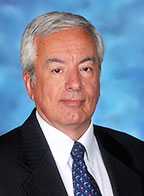
17 Nov Cost-effectiveness of Humanitarian Pediatric Cardiac Surgery
MedicalResearch.com Interview with:

Dr. Cardarelli
Marcelo G. Cardarelli, MD
Inova Children’s Hospita
Fairfax, Falls Church, Virginia
MedicalResearch.com: What is the background for this study? What are the main findings?
Response: Global Humanitarian Medical efforts consume a large amount of resources (nearly $38B in 2016) and donors (Countries, International organizations, WHO, Individuals) make the decisions as to where their funds should be allocated based on cost-effectiveness studies. Most resources go to prevent/treat infectious diseases, sanitation efforts and maternal/child care issues. An insignificant amount of resources is directed to satisfy the surgical needs of the populations in low and middle income countries (LMICs).
The idea behind our project was to find out if it was cost-effective to perform a tertiary surgical specialty (pediatric cardiac surgery) in this context and the answer (at $171 per DALY averted) was an overwhelming yes!
But most importantly, we believe, as many others do, that judging the cost/effectiveness of an intervention in order to decide resources allocation is valid for diseases that can be prevented, but not relevant when it comes to surgical problems that are not preventable.
Instead, we propose the use of another measure of effectiveness, what we call “The Humanitarian Footprint”.
The Humanitarian Footprint represents the long term benefits, as measured by changes in the life expectancy, extra years of schooling and potential lifetime earnings of patients treated surgically during humanitarian interventions.
To our surprise and based on the results, the effects on society of at least this particular surgical intervention were greater than we expected. We suspect this measure can be used in many other surgical humanitarian interventions as well.
MedicalResearch.com: What should readers take away from your report?
Two simple points:
1) At $171 per DALY averted, pediatric cardiac surgery as a humanitarian effort in Low and Middle Income Countries is very cost/effective
2) With each survivor gaining an estimated 39.9 extra years of life expectancy, 3.5 extra years of schooling and potentially nearly $160,000 of extra income in their lifetime (at power purchase parity and 3% discounting) the Humanitarian Footprint of this intervention has tremendous repercussions not only for the life of the individual but particularly for the societies where these individuals live as well. Just multiplying these individual gains by 250,000 (the estimated number of neonates and infants dying every year around the world due to lack of treatment availability), and the impact would be rather considerable.
MedicalResearch.com: What recommendations do you have for future research as a result of this work?
Response: I would encourage researchers to focus on measures of effectiveness (other than cost-effectiveness analysis) for global humanitarian surgical efforts . Whether it is C section availability, Trauma and Orthopedics, or any number of unmet surgical needs in most low and middle income countries, funding will be needed and realistic measures of effectiveness are the key to open the door to proper funding.
MedicalResearch.com: Is there anything else you would like to add?
Response: I volunteer my time as a senior pediatric cardiac surgeon for one of the many, perhaps the largest, humanitarian global organizations developing sustainable pediatric cardiac surgical services in LMICs, The William Novick Global Cardiac Alliance. We always suspected we were doing the right thing. Now we have the data.
Citation:
[wysija_form id=”3″]
[last-modified]
The information on MedicalResearch.com is provided for educational purposes only, and is in no way intended to diagnose, cure, or treat any medical or other condition. Always seek the advice of your physician or other qualified health and ask your doctor any questions you may have regarding a medical condition. In addition to all other limitations and disclaimers in this agreement, service provider and its third party providers disclaim any liability or loss in connection with the content provided on this website.
Last Updated on November 17, 2018 by Marie Benz MD FAAD
